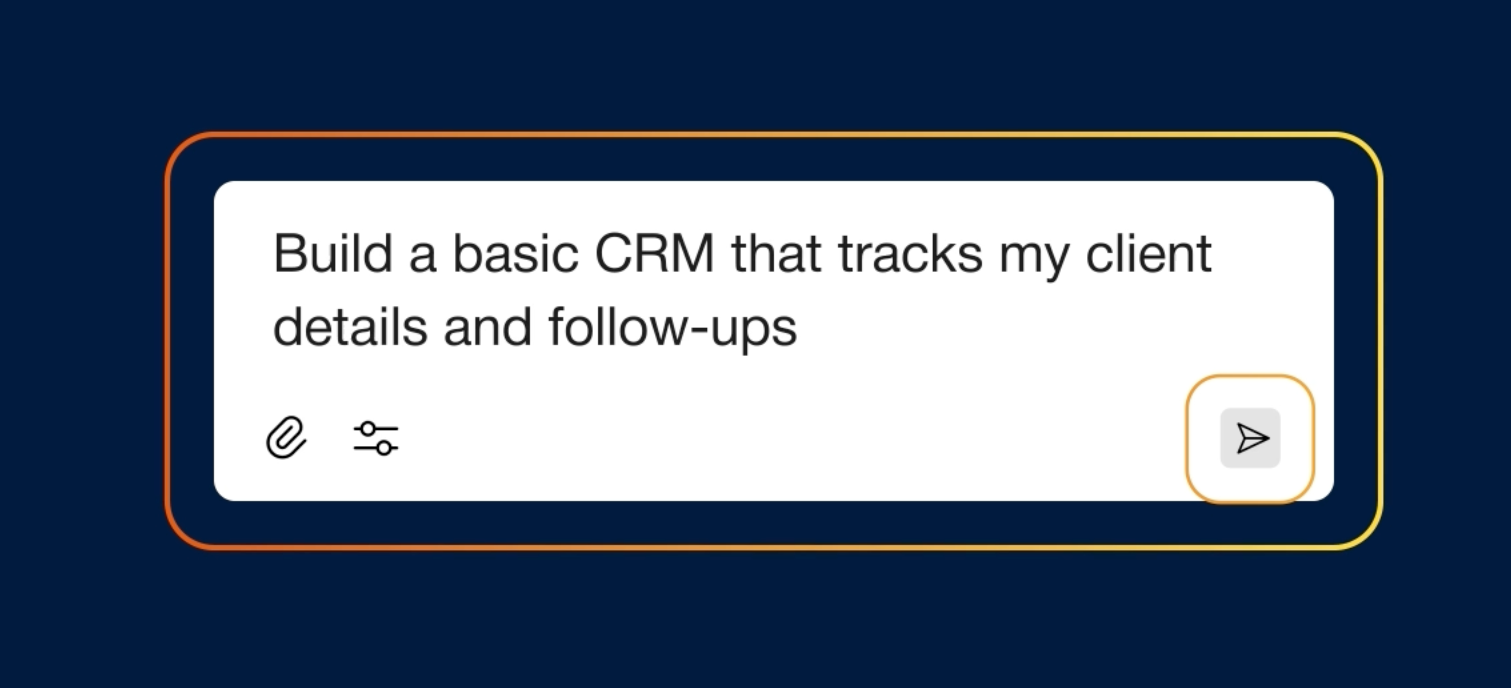Greenleaf Replaces Salesforce with Custom CRM Built in 25 Hours
5
apps built
$100k+
saved
60
employees supported
5
apps built
$100k+
saved
60
employees supported
"Custom Salesforce development was going to cost tens of thousands of dollars. I built exactly what we needed in a week for $200."
Dave Codrea
Managing Partner at Greenleaf
The Challenge
Dave Codrea runs Greenleaf, a vertically integrated real estate investment group based in Atlanta with 60 employees operating across eight Southeastern states. But Greenleaf isn't your typical real estate company—they specialize in buying what's out of style and turning it around.
"We buy all sorts of different types of real estate, typically something that's distressed that we have to go turn around and fix," Dave explains. During COVID, they bought dine-in restaurants. Recently, they've been converting office buildings to other uses. "It's the most negative thing out there, so we're buying office buildings."
This contrarian strategy has worked brilliantly for 15 years—but it created a software nightmare.
The constantly shifting business model:
"My business shifts every two years and none of my customers overlap. People renting restaurant space aren't also renting apartments or buying a mobile home or moving their office. I constantly have a different customer every 18 months that's totally new and totally different."
The SaaS trap:
"I found there's a lot of software that's great for one industry, but there's not a lot of software that's great for a dozen random things. Most of the time I buy software and I use like 10% of it. I'm sure it can do great stuff, but I just don't need all the great stuff."
The cost spiral:
Software represented only 1% of operating expenses but still cost hundreds of thousands annually. DocuSign went from nearly free to $25,000/year. "It's cheaper for me to mail them the letter than it is to sign it in DocuSign. That doesn't make a lot of sense."
Salesforce: too complex, too expensive:
"Salesforce is ultra complex and can do all this really cool stuff. But I don't need all that stuff. I just need to keep track of who I've spoken to, who's on our distribution list." Custom Salesforce development would have cost tens of thousands of dollars through third-party consultants.
The result? Greenleaf went back to Google spreadsheets. "My team was not super thrilled with that strategy. They're like, 'We're going to do what? We're going to go back to like 2012?' I was like, yes, for a little bit."

Why Replit: Seeing Is Believing
Dave discovered Replit at a business networking event about four months before the interview. A fellow entrepreneur (not a Replit employee) gave a presentation to a group of eight to ten business owners.
"In literally like 20 minutes, the group had built a full front end of an app with a database associated with it," Dave recalls. The presenter created a home inspection app that could analyze photos for code violations using AI—all in 30 minutes, live during the presentation.
Dave's reaction was immediate: "I was like, I can do that."
What sealed the decision:
- Proof over promises: Saw it work in real-time, not a sales demo
- Peer recommendation: Learned from another business owner, not a vendor
- Simplicity: If someone could build in 20-30 minutes during a presentation, he could learn it
- No technical background needed: Dave had never developed software before
"If it can do that, I can figure out how to make a CRM. Not on a super advanced level—I want it to be focused and simple and do the things that we need. And that's exactly what we were able to get."

Value Realized: Software That Works for the Business
Massive Cost Reduction
Before Replit, implementing custom Salesforce automation would have required hiring third-party Salesforce developers at a cost of tens of thousands of dollars. The total build cost with Replit? $150-200.
"We were going to have to hire outside Salesforce knowledge teams to come in and help. It was gonna cost tens of thousands of dollars to actually go somewhere with it. It was just too much."
Beyond the CRM, Greenleaf is working to consolidate 20-40 disconnected SaaS subscriptions, each adding to the hundreds of thousands in annual software costs.
Perfect Fit for Business Processes
"Any good business is going to have processes on how they want to do stuff. You normally get off-the-shelf software that makes you change your process—makes your business change based on what's available. Now we can do our process how we want to do it. We can make software that actually fits our process. We don't have to modify our way of doing things."
This alignment eliminated the friction of retrofitting Greenleaf's unique, constantly evolving business model into generic software templates.
Rapid Iteration and Team Buy-In
"If you can get feedback from people and implement it quickly, they're a whole lot more likely to actually use whatever you're doing. We can make changes on the fly. We can make changes in a meeting. Someone says we need something to work differently—okay, let's add this, let's do this—and then get people engaged in the process."
This rapid feedback loop transformed software from a constraint into an enabler. Team members who were frustrated with Google spreadsheets now actively contribute ideas because they see changes implemented immediately.
Empowerment Across the Organization
Dave is now encouraging non-technical team members to build their own tools: "We got some people on our team that are using it now. I'm like, hey, I know you don't know anything about this stuff, and you don't even need to. Just ask it some questions and see what it can do, if it can help you make something that's useful for your role."
Mobile-First Reality
Without specifically planning for it, the CRM works seamlessly on mobile devices. "Most of my team is not using the desktop version, they're using the mobile version and just looking at it on their phone." For a team that travels across eight states constantly, this mobile accessibility is critical.
Scalable Model
With two successful apps built and five more in development, Greenleaf has proven a repeatable model: identify a business need, spend 10-25 hours building a custom solution, and deploy to the team. No lengthy procurement cycles, no vendor negotiations, no compromises.
Lessons for Small and Medium Businesses
Dave's journey offers a blueprint for other business owners:
Start with a clear pain point: Don't build software because you can—build it because you need it. For Greenleaf, it was the disconnect between their dynamic business model and rigid SaaS platforms.
You don't need to be technical: "I've never developed anything. I've made basic websites maybe 10 years ago. I'm not pulling up code and editing it." If Dave can build production software, so can you.
See it in action first: Dave's confidence came from watching someone else build in real-time. Seeing is believing—and proof of concept matters more than marketing promises.
Build exactly what you need: "We only want the buttons that we want to see. We don't want the other 75 buttons." Simplicity and focus beat feature bloat every time.
Iterate based on team feedback: "Let's try it. See how fast can we break things and get to where it's going to be better." Small businesses can move fast—leverage that advantage.
Think about consolidation: "My goal now is, how can I reduce that total number of subscription SaaS footprints that we have to really consolidate control and just get it to do the functions we need. Just pay for the functions that you need."
The Bottom Line
Dave Codrea built a custom CRM in 25 hours that replaced Salesforce, saving hundreds of thousands, and perfectly fits Greenleaf's constantly evolving business model. Now with five apps in development and a team empowered to build their own tools, Greenleaf is proving that small businesses don't have to choose between expensive enterprise software and basic spreadsheets—they can build exactly what they need.
About Greenleaf
At Greenleaf, we believe people deserve opportunities that improve, advance, and provide stability in life. We make that happen by creating better real estate properties with an approach that always places people at the forefront.
We're a full-service, integrated real estate company on a mission to improve lives. We buy, rehabilitate, and manage long-term low-income residential properties and small business commercial properties to provide advancement opportunities for our residents, tenants, investors, and communities. But we don’t stop there – we also administer vital resources to reduce stress and increase stability for our residents, including community food gardens, youth programs, supply drives, and financial counseling.
